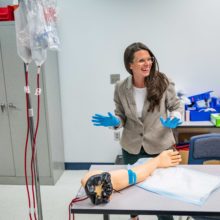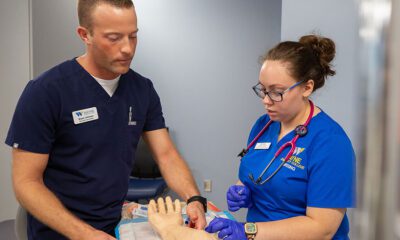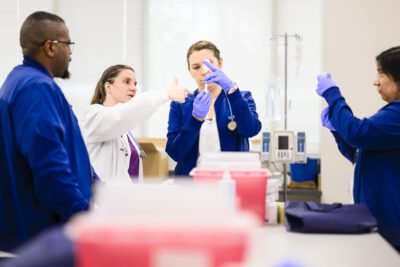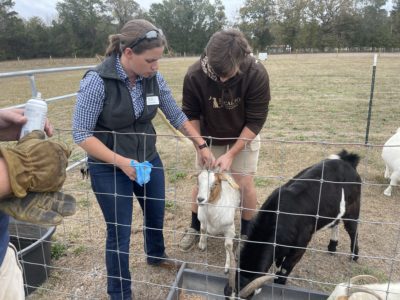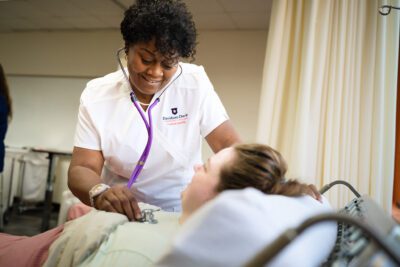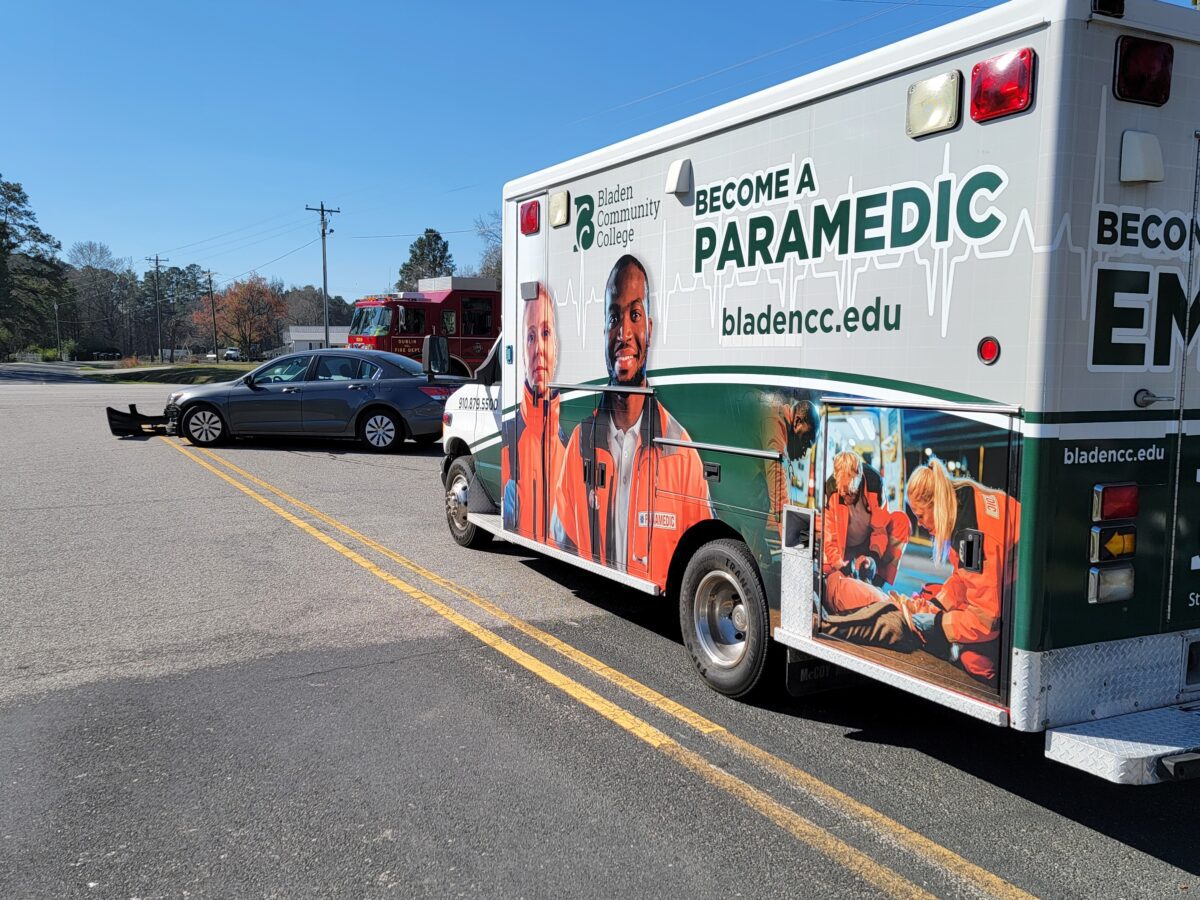
|
|
The word community is just as important as the word college, according to Bladen Community College leaders.
“Our focus is to be a bright spot in our community,” Dr. Amanda Lee, president of Bladen Community College, said.
Having a strong presence in the community is a hallmark of the college’s mission. And for Bladen leaders, that means dialing in to the needs of Bladen County.
In November 2023, Bladen became the first community college in North Carolina to reach Emergency Medical Services (EMS) Agency status at the Advanced Emergency Medical Training (EMT) level, credentialed by the North Carolina Office of Emergency Medical Services.
It’s a unique approach for the college — being part of the solution to their community’s stretched EMS coverage.
Bladen Community College’s EMS Agency is composed of faculty, staff, and students who are all trained to provide emergency medical services. Their primary responsibility as an agency is to respond to the needs and well-being of the college community. The agency is dispatched through the county’s 911 operating system for all calls and texts that require medical services on campus.
But the agency’s role extends beyond campus. As a credentialed agency, the college is equipped to respond to medical emergencies in times of EMS overload in the county — everything from minor traffic accidents to mass disasters.
The college’s credentialing comes at a time with dwindling county EMS agencies and fewer EMS volunteers. According to the National Rural Health Association (NRHA), roughly 53% of rural EMS agencies are staffed by volunteers only.
The challenge is not just fewer volunteers and agency closures in Bladen County but also a sprawling geographic footprint. Bladen is the fourth largest county by land area in North Carolina, covering 875 square miles. And while it’s common for EMS agencies in rural areas to cover large distances, it’s not ideal. Large coverage areas and longer travel times can significantly impact patient outcomes and survival rates, according to the National Advisory Committee on Rural Health and Human Services (NACRHHS).
Attaining EMS Agency status is a win-win for everyone, said Dr. Dolly Horton, Bladen’s vice president for instructional services. It’s a win for the community, it’s a win for the college, and it’s a win for students.
While students taking EMT or paramedic courses experience lifelike simulations, nothing compares to real medical emergency calls.
“You’re not going to get a better, more realistic learning experience than actually dealing with a real life patient,” said Brian Hehl, director of the emergency management services program at BCC.
Taking it to the next level
When Hehl first pitched the idea, he initially thought the college would just be a non-transporting, basic life support agency – essentially providing first-aid on campus until EMS arrived. Hehl knew they had the people, the equipment, and the knowledge to respond to the needs of the campus community.
But after a conversation with Bladen County’s EMS director about the college using their fully-equipped ambulance, it became apparent that the college could extend their reach and become an agency that functioned county-wide.
“All the pieces were already in place,” Hehl said. “It was kind of a no-brainer.”
The college does not bill for medical services or equipment costs. Instead, the county is responsible for those. Additionally, students do not incur costs if they receive medical care on campus.
And because resources and staffing were already in place, the college was able to “implement this initiative with minimal financial impact,” according to a press release.
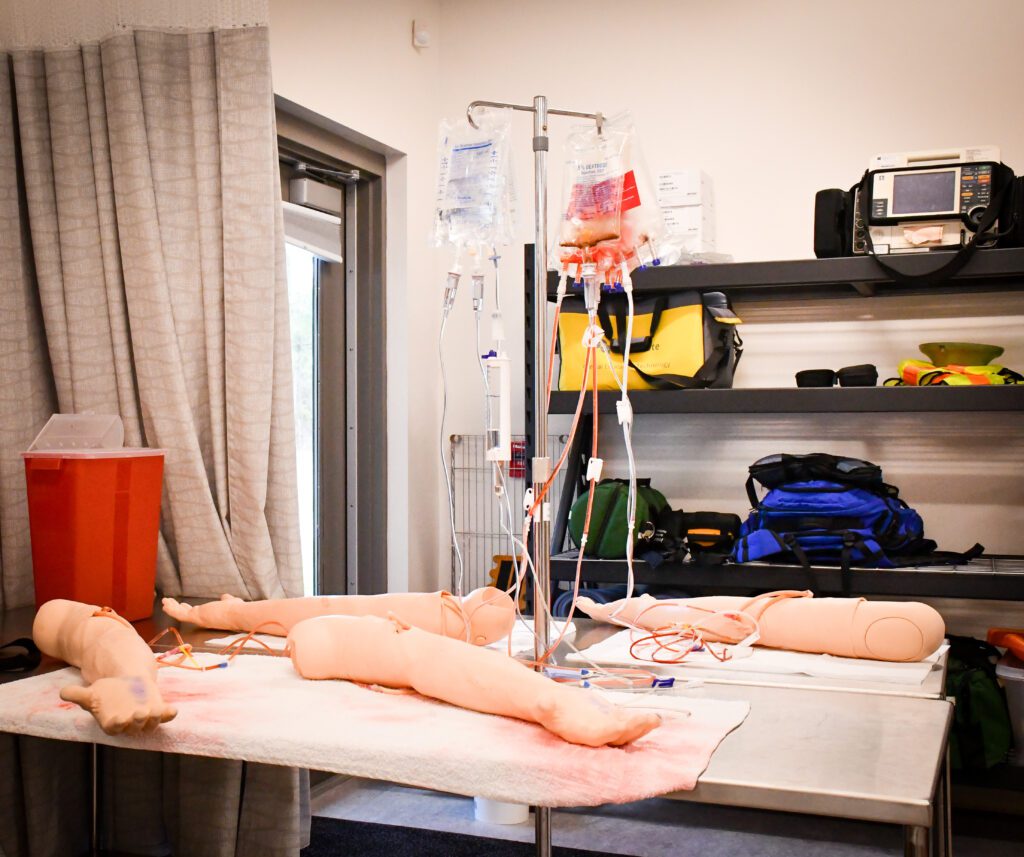
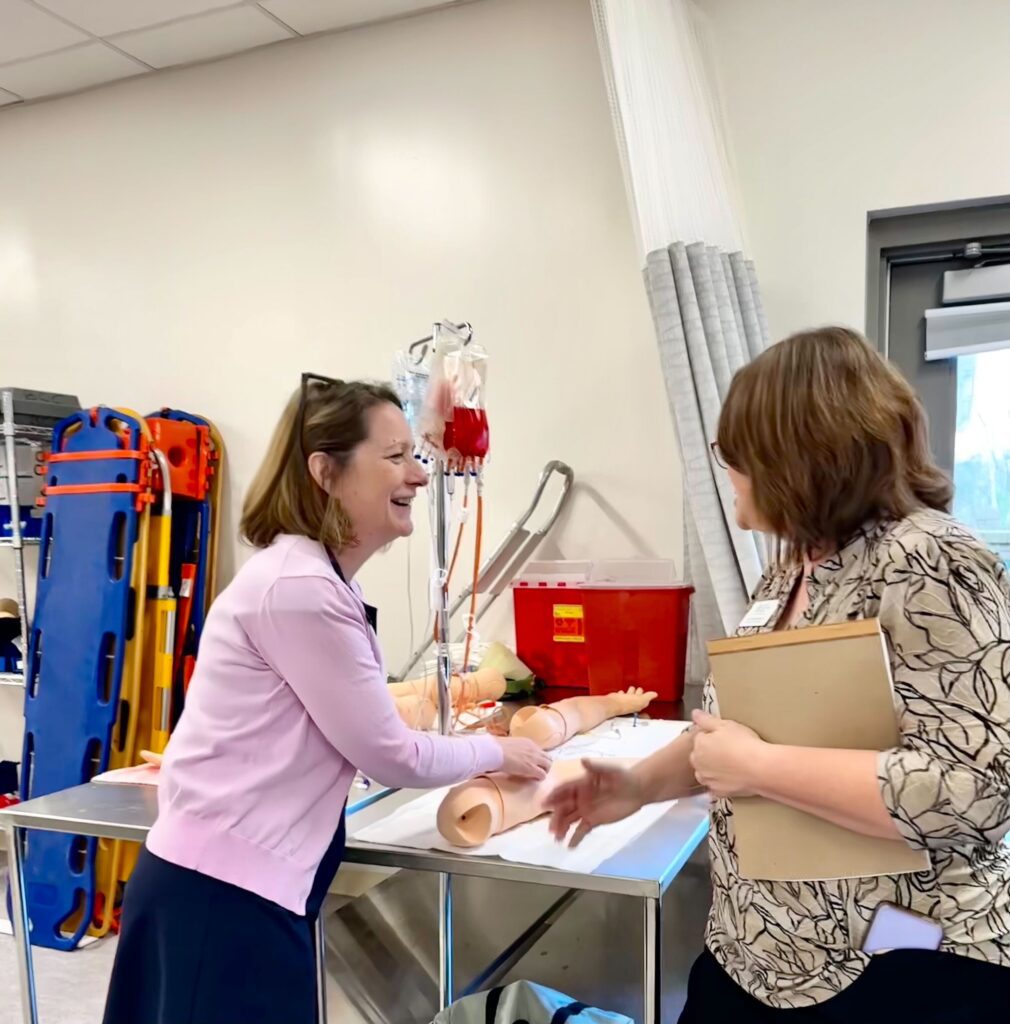

Aligning strategic plans
For community colleges, meeting the needs of those they serve means thinking outside the box.
Sometimes it looks like starting an EMS Agency on campus while other times it looks like strategic alignment with the county.
The college has spent the last several years connecting individuals to needed resources, planting seeds for career possibilities, creating industry partnerships, and aligning their strategic plan with the county’s strategic plan — all while sustaining and implementing academic programs that generate enrollment.
In 2022, Bladen County sought an outside source to facilitate their strategic plan. Throughout the process, there were multiple subcommittees composed of key individuals for various areas like education, parks and recreation, and health. Many of those subcommittees had a Bladen Community College representative, including Bladen’s president, Dr. Lee, who served on the education committee.
As the county was nearing the end of their strategic planning, it was almost time for the college to begin theirs.
Being involved with the county’s strategic planning allowed Lee to see some of the gaps where more resources were needed. It seemed like a natural continuation of the county’s work to align the college’s strategic plan with that of county’s, Lee said.
The alignment has allowed college leaders to respond in a quicker fashion to the needs of the community. It has also prepared Lee and others for opportunities that may arise in the future that the college will need to support.
As for future plans, college leaders continue to build relationships and partnerships across the county, and they’re already taking components of the EMS Agency model and applying it to other programs like culinary and agribusiness.
